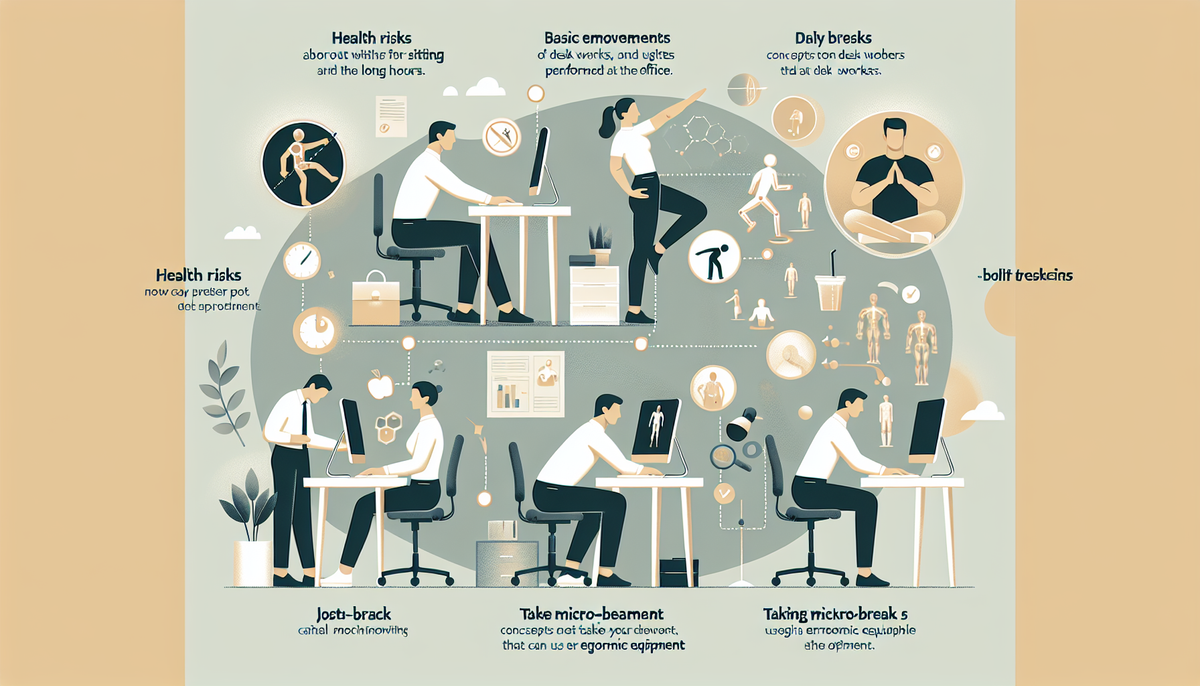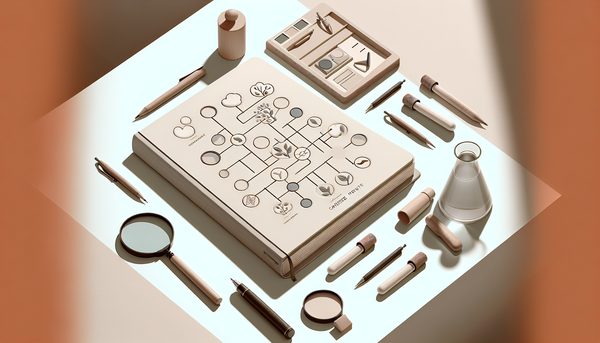Daily Movement for Desk Workers

The Hidden Dangers of a Desk Job
In today’s modern workforce, the desk has become the new factory floor. While office work may seem safer than manual labor, it carries its own set of insidious risks. The rise of the desk worker has led to an increasingly sedentary population, and the health consequences of this shift are becoming alarmingly clear. The human body is designed for movement, yet many of us spend eight hours a day or more glued to a chair. This article will shine a light on the "sitting health risks" and provide a practical guide to incorporating daily movement and "desk exercises" into your routine, turning your workspace into a launchpad for a healthier, more active life. Understanding the dangers is the first step toward combating them and transforming your career from a health liability into a sustainable, long-term asset.
Understanding the Health Risks of Prolonged Sitting
The phrase "sitting is the new smoking" has gained traction for a good reason. Extensive research has linked prolonged sitting to a host of chronic health problems. When you sit for extended periods, your body's metabolic rate slows down significantly, impairing its ability to regulate blood sugar, blood pressure, and break down body fat. This can lead to an increased risk of obesity, type 2 diabetes, and cardiovascular disease. The "sitting health risks" don't stop there. Studies have also shown a correlation between a sedentary lifestyle and an increased risk of certain types of cancer, including colon, endometrial, and lung cancer. The lack of muscle activity, especially in the large muscles of the lower body, is a key contributor to these negative outcomes. Every hour spent sitting is an hour your body is not functioning as it should be.
How a Sedentary Lifestyle Affects Your Body and Mind
The impact of a desk-bound job extends beyond the purely physical. Mentally, a lack of movement can lead to increased feelings of lethargy, decreased focus, and a higher incidence of anxiety and depression. Physical activity is a known mood booster, releasing endorphins that have a positive effect on our mental state. When we're stagnant, we miss out on these natural benefits. Physically, the effects are more immediately noticeable. Poor posture from hunching over a keyboard can lead to chronic back, neck, and shoulder pain. The hip flexors and hamstrings can become tight and shortened, leading to mobility issues and an increased risk of injury. Over time, this can result in a significant decline in overall physical capability and a lower quality of life. The connection between a healthy body and a sharp mind is undeniable, making an "office workout" routine not just a recommendation but a necessity.
Simple Desk Exercises for a Healthier You
The good news is that you don't need a gym membership or fancy equipment to counteract the negative effects of sitting. There are numerous effective "desk exercises" you can perform right at your workstation. The key is to be consistent and make these movements a regular part of your day. Think of it as a series of micro-workouts that keep your body engaged and your blood flowing. These exercises are designed to be discreet and simple, so you can do them without drawing too much attention to yourself. From simple stretches to strength-building moves, your desk can become your personal fitness zone.
Neck and Shoulder Stretches to Relieve Tension
Tension in the neck and shoulders is a common complaint among desk workers. To combat this, try the following stretch: sit up tall and gently tilt your head toward your right shoulder, holding for 15-20 seconds. You should feel a gentle stretch along the left side of your neck. Repeat on the other side. For your shoulders, perform shoulder rolls by lifting them up toward your ears, then rolling them back and down. Do this 10 times, then reverse the direction for another 10 reps. Another great exercise is the "doorway stretch." Stand in a doorway and place your forearms on the frame, with your elbows slightly below shoulder height. Gently step forward until you feel a stretch in your chest and the front of your shoulders. Hold for 30 seconds.
Back and Torso Twists for Improved Flexibility
Your back and core are also vulnerable to the strains of sitting. To keep them flexible, try a "torso twist" in your chair. Sit with your feet flat on the floor and your back straight. Gently twist your upper body to the right, using the armrest to deepen the stretch. Hold for 15 seconds and repeat on the left side. This helps to mobilize the spine and relieve tension. For your lower back, a seated "cat-cow" stretch can work wonders. Sit on the edge of your chair and place your hands on your knees. As you inhale, arch your back and look up toward the ceiling (cow). As you exhale, round your spine and tuck your chin to your chest (cat). Repeat this for 10 breaths.
Leg and Glute Exercises to Stay Active
Don't forget your lower body! To keep your legs and glutes from becoming dormant, try "leg extensions." While seated, extend one leg out straight and hold for a few seconds before lowering it back down. Do 15 reps on each leg. You can also perform "calf raises" at your desk. Stand up and raise your heels off the floor, holding for a moment at the top. Do 20 reps. To activate your glutes, discreetly squeeze them for 10-15 seconds at a time. This simple "office workout" move can be done anytime you're sitting and helps to keep these important muscles firing.
Beyond the Desk: Incorporating More Movement into Your Workday
While "desk exercises" are a great start, the ultimate goal is to break the cycle of prolonged sitting. This means finding opportunities to move throughout your workday. The most effective strategy is a combination of structured exercises and lifestyle adjustments. By making conscious choices to be more active, you can dramatically reduce your "sitting health risks" and improve your overall well-being. Think of your workday as an opportunity for movement, not a barrier to it.
The Power of Micro-Breaks and Standing Desks
One of the most powerful tools in your arsenal is the "micro-break." Set a timer to remind yourself to get up and move every 30 minutes. This doesn't have to be a long break. Just a minute or two of walking, stretching, or doing a few "desk exercises" can be incredibly beneficial. If you have the option, a standing desk is a fantastic investment. Alternating between sitting and standing throughout the day can significantly reduce your sedentary time and has been shown to have a positive impact on both physical and mental health. It keeps your body guessing and prevents it from settling into a stagnant state.
Simple Lifestyle Changes for a More Active Career
Look for small ways to inject more activity into your day. Take the stairs instead of the elevator. Park further away from the office to get in some extra steps. Instead of emailing a colleague, walk over to their desk. If you have a phone call, pace around your office instead of sitting. These small changes can add up to a significant increase in your daily activity levels. The key is to build an "office workout" mentality, where you are constantly on the lookout for opportunities to move. By making these changes a habit, you can create a more active and sustainable career for yourself.
Conclusion: Take Control of Your Health: Your Action Plan
Your health is your most valuable asset, and it's time to take proactive steps to protect it from the "sitting health risks" associated with a desk job. By incorporating "desk exercises" and making a conscious effort to move more throughout the day, you can transform your work environment into a place that supports your well-being. Start small by choosing a few exercises from this guide and committing to doing them every day. Set reminders to take micro-breaks, and look for opportunities to be more active. Your body and mind will thank you for it. The power to create a healthier, more active work life is in your hands.


